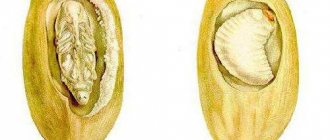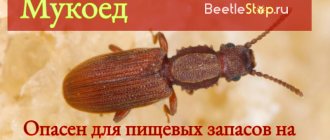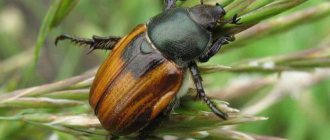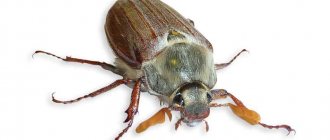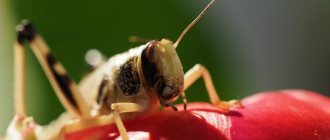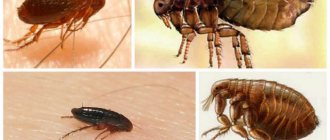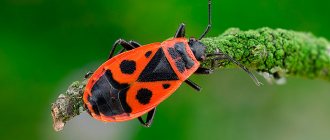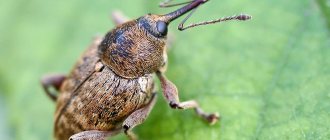During the process of growth and maturation, the colony of eggs and larvae is protected from death by the skin of the dying female. The pest has excellent camouflage abilities and becomes noticeable only when the colony has captured the entire plant.
The list of plants that are affected by the false scale insect is extensive. The semi-hard insect has no food preferences: it equally attacks both indoor and garden seedlings, causing the death of the latter. How to recognize and defeat the parasite?
False shield: photo
False shield.
Which plants are harmed?
Soft
It attacks almost all plants in tropical and subtropical regions. He especially loves lemons. Of the indoor flowers, oleanders, ferns, and ivy suffer the most.
Acacia
Damages deciduous trees - acacia, ash, fruit trees, grapes, berry bushes.
A large number of insects can cause part of the crown to dry out or die completely.
The bark of young trees becomes covered with cracks, the fruits become unmarketable and lose their taste.
Olive
Harmful to citrus fruits, bay trees, myrtle, pomegranate, oleander, hibiscus, figs, tea bushes, cherry laurel.
Hemispherical
Settles on cycads, asparagus, ferns, oleander.
Small spruce
Harms all types of spruce, starting with common spruce. Can spread to other coniferous trees.
Description of the pest
Name: False scale insects or Coccids Lat.:
CoccidaeClass: Insects - Insecta Order: Hemiptera - Hemiptera
| Habitats: | garden, vegetable garden, greenhouses, rooms |
| Dangerous for: | citrus fruits, ferns, conifers |
| Means of destruction: | mechanical cleaning, traditional methods |
The false scale insect has the appearance of a cake-like oval formation. Initially, these formations have a milky color, then they change to dark brown. The parasite larvae live under such shields until they hatch.
These formations are often not taken seriously, because often people do not pay attention to the first appearances. They look more like growths that can be confused with a manifestation of a disease rather than a pest.
general information
The damage (and its external manifestations) caused by scale insects is very similar, regardless of the type of pest. The scale insect sticks to the leaf, and a yellow spot begins to appear in this place, which begins to gradually increase - the scale insect drinks the juice of the plant. Over time, the leaf turns yellow completely, curls and falls off. The growth of the plant slows down, the leaves fall off, after which the plant begins to dry out and die. Scale insects affect not only the leaves, but also the fruits of citrus plants.
A common characteristic characteristic of scale insects is the presence of protective shields. False scale insects are distinguished by the absence of a shield, but they cause the same damage. Scale insects feed by sucking juice from plant leaves, so they are classified as sucking pests. The main danger is that the larvae spread throughout the plant literally a few hours after they emerge from the eggs, and immediately begin to eat.
Representatives of different species differ only in the color of the shield and the size of the individual itself. The scutum of an adult female is dark or red-brown in color, has the shape of a circle and reaches two millimeters in diameter. Males are smaller, and the scutellum is slightly elongated.
Difference from scale insects
It’s not for nothing that the false scale insect got its name, because it is so easy to confuse with the scale insect. However, there are some distinctive nuances.
- The false shield does not separate from its shield; it can only be removed completely. It looks like a convex growth.
- The scale is separated from the shield when you try to “remove” it, because it serves as a barrier. It is flatter and thinner.
Scale insect and false scale insect.
Reproduction and life activity
Scale insects live in colonies, which is why they can cause significant damage to the plant. They “suck out” all the useful substances necessary for growth, development and photosynthesis. Scale insects reproduce by laying eggs, from which larvae subsequently emerge. They spread throughout the plant and are localized in small groups. This can be noticed by the appearance of unusual growths and curvatures on the trunk.
Significant damage is:
- drying of shoots;
- yellowing and falling of leaves.
Usually there are one or two generations (offspring) per year. But at one time the female lays about 3000 eggs. As for life expectancy, for males it is only from 1 to 3 days, and for females it is months. But the males have wings, they can fly to different parts of the plant, and even move independently over long distances.
The full development cycle of an insect is 45-65 days. Having destroyed 1 generation, you no longer have to worry about this pest.
Kinds
There are about a thousand species of pests found in nature. Here is a list of the most famous.
Spruce
It mainly affects plants of coniferous forests up to ten years old. Dangerous, spreads quickly.
Acacia
Fruit, berry, and ornamental species such as acacia, apple, gooseberries, currants, etc. are at risk.
Japanese wax
All varieties of citrus fruits and tropical crops are affected.
Soft
This type of false scale insects prefers to feed on house flowers and plants. The most unprotected.
Spruce sawfly
The spruce sawfly (Lygaeonematus abietinus) is a very small species; the length of the female is 5–6 mm, the male is 4.5–5 mm. The larvae feed on young needles,
gnawing it from the sides, often biting it completely. A sign of the presence of a sawfly can be partially or completely eaten May shoots of the current year, with rusty remains of half-eaten needles.
Control measures
Treatment with Pinocid. The first treatment is carried out at the beginning of shoot regrowth, the second – after two weeks.
Spruce moth
The smoky spruce moth (Boarmia ribeata Cl) damages, in addition to spruce
and fir, oak, birch and willow. Caterpillars are up to 4 cm long, gray-brown or yellow-brown, with light lines and dark oblique strokes visible on the sides. Under the black-edged spiracles there are often yellowish lateral spots.
The flight of butterflies occurs in June-July. The caterpillars feed in late August–September, hibernate and complete their development by July of the following year. They pupate under the forest floor.
Control measures
Spraying insecticides on younger caterpillars. Place food baits with fermentation additives, destroy brown pupae by digging and loosening, loosening the litter, which increases the consumption of pupae by birds.
Prevention measures
It is better to prevent than to deal with the consequences. This expression is true in the case of a false scale insect. You can prevent its occurrence in two simple ways.
Quarantine . The most active tramp will never get into the house on his own. Therefore, you need to purchase plants only from trusted places. After the new green pet is brought in, it should be thoroughly examined and quarantined for several weeks.
Care . A weakened plant may develop diseases and pests. Therefore, timely hygiene procedures will help maintain immunity. Pets are properly planted, fed regularly, watered and sprayed in a timely manner.
"Fufanon"
This is the most popular drug used to treat cultivated and ornamental plants. Even in the garden he is able to remain active for two weeks. And if we talk about greenhouses and house plants, then the drug will retain its original concentration for up to a month. This is a huge plus, since you will not have to repeat the treatment after the larvae hatch. There is enough time to destroy all generations. With the help of this drug, the fight against scale insects on indoor plants becomes quite simple.
Its active substance malathion is highly toxic. This is a contact drug that has an effect on parasites upon direct contact with their bodies, respiratory and digestive organs
Of course, extreme care must be taken to ensure that pets and fish, as well as family members, are not harmed during processing.
Pest control
If you do not fight the pest, the plant has every chance of dying. There are several ways to combat insects.
First of all, if possible, you need to isolate the plant from healthy ones.
Mechanical cleaning
For some plants, procedures can be fraught with injury, but otherwise there is no way to remove the false scale insect.
- Isolate the diseased plant and wipe the affected area with a cotton swab and alcohol. Be sure to wipe it off, even if you have to wipe it with a scraper. Inspect and treat the trunk, the most protected places.
False scale on the escape.
- Replace the top layer of soil; it may contain eggs and larvae.
- Wash in the shower several times.
- Treat the entire plant with a concentrated soap solution and leave to dry.
Folk remedies
False scale on a plant.
Effective folk methods are oils. They completely process the flower, which creates a film and the insect cannot feed. Such means are:
- machine oil;
- olive;
- kerosene.
Chemicals
Insecticides help with mass infestations when nothing else will help. You can use Aktar or Fitoverm.
The dosage for indoor plants is indicated in the instructions for the preparations.
Improper care
Over or under watering
Thuja loves well-moistened soil, but cannot tolerate stagnant moisture, as well as close groundwater.
The recommended frequency of watering for thuja is once a week, during dry periods - twice a week, and in the first month after planting - daily.
The volume of water for irrigation, under normal conditions, should be a bucket per tree (in unfavorable conditions, two buckets). In order for moisture to be retained in the soil, but not to stagnate, the soil in the tree trunk circle must be mulched: in winter with sawdust, in summer with peat.
Excessive watering and stagnation of moisture for more than two weeks lead to rotting of the plant roots and contribute to the development of fungal diseases. With insufficient watering, the thuja turns yellow and dries out.
She loves thuja and periodic sprinkling, especially in the summer heat. It is better to do this in the evening so that drops on the needles do not cause sunburn.
Errors in feeding
Fertilizers for thuja are useful, but in moderation. If fertilizers were applied during planting, then the next time the tree will need to be fed in two years.
In spring, the plant is fertilized with nitrogen compounds, and in early summer with potassium compounds. If the tree grows in poor soil, then in the summer you will also need fertilizers containing phosphorus. However, it is worth remembering that excessive application of fertilizers can cause burns to the roots and yellowing of the tips of the shoots.
Important! Under no circumstances should you feed thuja before the winter period. This is fraught with the development of various kinds of diseases. In this case, the thuja should be fertilized with a complex fertilizer, for example, Kemira Universal or Osmokot.
In this case, the thuja should be fertilized with a complex fertilizer, for example, Kemira Universal or Osmokot.

